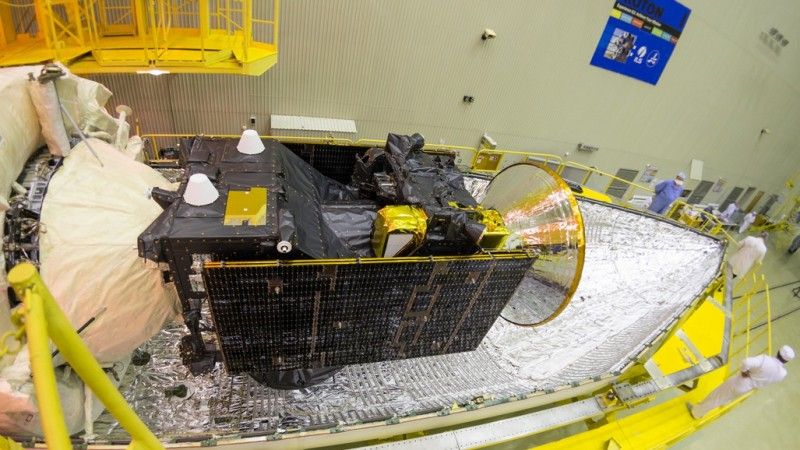
Poland Involved In The ExoMars 2016 Programme
ExoMars 2016 programme, realized by the European Space Agency together with Roskosmos, is going to be initiated, in line with the plan, in March this year. The mission objective is to send a probe with a lander to Mars. What’s important, Polish companies also make significant contribution to that project. Here we mean Creotech Instruments S.A. and VIGO System S.A. companies.
Europeans and Russians In Search of Life on Mars
The main objective of the ExoMars2016 mission, realized by ESA in collaboration with the Russian Roskosmos agency, is to look for biological traces of life on Mars. According to the information released by the European Space Agency, Trace Gas Orbiter probe, with the Schiaparelli EDM test lander, will lift off on 14th March 2016, on-board the Russian Proton-M launch vehicle fitted with the Briz-M module. ExoMars system consists of four space platforms which are going to be sent towards Mars in two stages, in 2016 and 2018. The tasks which will be realized during the year 2016 will be used during the second stage of the initiative, also known as Exo Mars 2018. According to the assumed schedule heavy, 1.8 tonne lander will be sent to Mars, along with a Mars rover vehicle weighing ca. 200 kilograms. The equipment will reach Mars in January 2019, and it will be operable for ca. 7 months.
Polish Contribution to Mars Exploration
Polish involvement in the project is related both to the works on the orbiter (satellite which is to be sent into the Mars orbit), as well as the lander which is going to land on the Mars surface.
Not only is the mission unique in the light of the area of science and knowledge which is the topic for the research, even though these elements are most pronounced, as ExoMars is a prime example of the fact that together, we may achieve more. This is also the case here, in Poland. Thus, one of the goals assumed by Creotech Instruments is to support other Polish companies, within the process in which they enter the space sector. We are not treating other Polish ‘space’ companies as competition, we treat them rather as partners, who allow us to realize increasingly more advanced and ambitious projects.
Carrying out measurements with the use of the equipment on-board the probe, including the advanced CaSSIS camera, is going to be the main job for the probe placed in the Orbit. Polish Academy of Sciences Space Research Centre is a member of the consortium responsible for creating the Exo Mars Trace Gas Orbiter. Polish institution was tasked with production and installation of the CaSSIS camera. The camera will deliver high resolution, colour imagery of the Mars surface. The device will be used to photograph rock formations, suspected by the scientists to emit trace gas quantities. These gases may be a symptom of geological processes happening under the surface of Mars, they may also be a proof of the fact that life existed or exists on Mars. NOMAD and ACS instruments used by the Orbiter will use the imagery provided by the camera to identify the gas emission sources. Creotech Instruments S.A. company dealt with surface installation of the power-supply system for the CaSSiS camera, as ordered by the Polish Academy of Sciences Space Research Centre. The installation process is carried out at the special laboratories of the Creotech company, making it possible to fully control the quality and supervise the production process.
Schiaparelli module – landing demonstrator – is going to check the weather conditions during the course of the landing procedure. It is also going to test a number of innovative technological solutions which are expected to be used during the future interplanetary initiatives realized by ESA. The most important solution to be tested is the ablation cover (protecting the lander from high temperatures present during the entry phase of the landing) and the retrorockets system. The lander is to prove that there is an option of carrying out a landing with controlled orientation and velocity.
For the purpose of carrying out the tests, during the entry phase and landing of the Schiaparelli module on Mars, Comars+ system, developed by the German Space Agency (DLR) is going to be used. This suite monitors the status of the external layers of the lander. Narrow-band ICOTOM radiometers are going to be a part of the said system. They have been developed by the French Le Verre Fluoré company, and they use IR detectors manufactured by the Polish VIGO System company.
ExoMars is an ambitious initiative which may turn out to be a milestone for Mars exploration, and expansion of our knowledge of the universe. We are proud of the fact that, together with the Polish Academy of Sciences Space Research Centre, and Creotech Instruments, VIGO System company is also involved in the initiative.